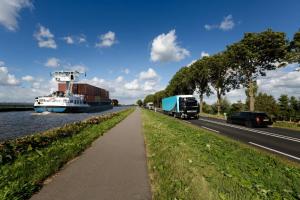The number of participating vessels at CLINSH will soon be expanded considerably. At the moment the finishing touches are being made to award contracts to skippers selected during the second tender round. There is still room for ships to register if they can meet with the requirements.
The second European tender for CLINSH ran from 13 April to 28 May 2018. A total of 21 additional ships could participate, in addition to the 26 vessels selected during the first tender round. Measuring equipment is placed on all ships participating in the CLINSH practical test, after which the emissions on board are measured continuously for one to two years. This yields valuable information about the environmental performance and operational costs when applying the different techniques.
Measuring equipment
Multonic, the company that supplies the measuring equipment on board of the ships, is busy getting everything installed on time. Some of these ships are now actively measuring the emissions. The skippers who were selected during the second tender round will soon receive their contract, after which the measuring equipment will be installed on board.
Via www.clinsh.eu we will keep you updated about the progress regarding the project organization as well as the measurement results.
Which ships are involved?
On the second round of CLINSH a maximum of 21 ships could participate, divided over the following techniques and fuels:
• Already converted ship to LNG (liquefied natural gas) and comparable sister ship to regular fuel;
• Already converted hybrid ship and comparable sister ship to regular fuel;
• LNG vessels sailing on diesel for a certain period of time;
• Ships temporarily sailing on the new generation of HVO biodiesel;
• Ships in which a 'marinised' (suitable for use in a ship) Euro VI engine is installed;
• Fuel Water Emulsion in combination with installing a so-called SCR post-treatment;
• Fuel Water Emulsion in combination with Gas to Liquid
• SCR post-treatment in combination with Gas to Liquid
• Ships on LNG, CNG (natural gas under pressure), SCR (DPF) and hybrid technology, to be used as a control group

